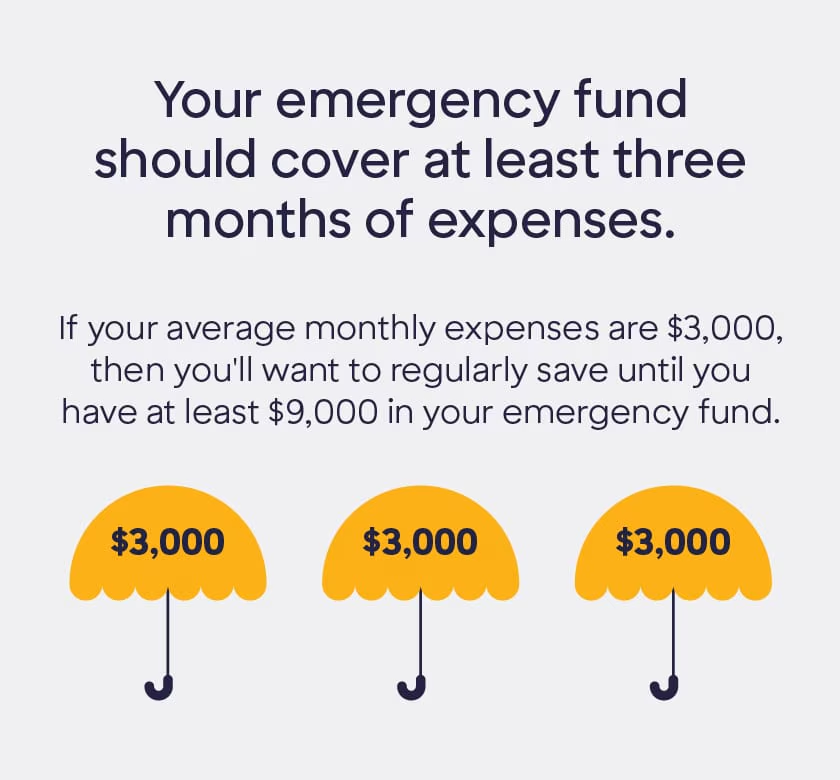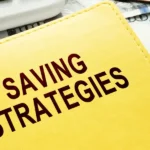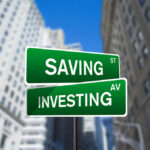Let’s discuss a topic that may not seem exciting. It won’t give you the rush of winning on the stock market or the thrill of closing a new real estate deal. But there is no doubt that it is the most important financial foundation you will ever build. This is your emergency savings account.
I constantly see it at work: smart, driven people diving right into investing because they want to make money and secure their future. They are looking at ETFs, learning about cryptocurrencies, and dividend stocks. But when I ask them about their emergency savings, they often just stare at me blankly or say something vague like, “Oh, I have some money in my checking account.”
That is like putting up a skyscraper on a base of sand. It might look promising for a while, but if a storm hits—like losing a job, having a medical emergency, or having to move suddenly—the whole thing could fall apart.
We’re going to go into excellent detail about emergency savings in this 4000+-word guide. We’ll talk about why this is the first step in any good financial plan, how to figure out how much you need for your unique situation, where to keep this important money, and how to make it from scratch, even if you feel like you’re living paycheck to paycheck. This book isn’t just about saving money; it’s about buying yourself peace of mind, strength, and the ability to get through any financial storm without losing sight of your long-term goals.
Before you put another dollar into your brokerage account, come with me on this trip. Let’s establish your financial safety net.
The “Why”: Understanding How Important Emergency Savings Are
People often think that letting money sit in a savings account is a negative idea in a world that values growth and high returns. Why allow your money to remain idle when it has the potential to work for you? The answer is straightforward: managing risk. Your emergency savings fund is not an investment; it is your insurance policy against life’s unexpected and often costly emergencies.
What ‘s a Real Emergency?
First, let’s be very clear about what this money is for. An emergency is an unexpected, necessary, and urgent cost. It’s not a last-minute trip deal, a new iPhone, or a shopping spree for the holidays.
In most cases, a real emergency falls into one of the following categories:
Loss of Income: For most people, this is the biggest financial shock. This loss of income could result from a layoff, a furlough, or an inability to work due to illness or injury.
Medical or Dental Emergencies: A sudden trip to the ER, a root canal that you didn’t expect, or any medical bill that your health insurance doesn’t fully cover.
Urgent home repairs include a leaking roof, a burst pipe, or a furnace that breaks down in the middle of winter.
Car Trouble That You Didn’t Expect: A significant engine repair or a transmission breakdown hinders your ability to commute to work.
Unexpected Family Needs: For example, having to travel unexpectedly to take care of a sick relative.
If you don’t have a separate emergency savings account, these unexpected expenses can lead to poor financial decisions. You might have to take money out of your retirement accounts (which will cost you taxes and penalties), sell your investments at a loss, or, more likely, get a lot of credit card debt with high interest rates. This is how financial problems start. An emergency fund stops the downward spiral before it starts.
The High Cost of Not Having an Emergency Fund
The Federal Reserve’s 2023 report found that many American adults would have trouble paying for an unexpected $400 bill. This number is scary because it shows how many people are having trouble with money.
The Debt Trap: What if you need to fix your car and don’t have any money saved up for emergencies? You charged it to a credit card with an 18% APR. If you only make the minimum payments, it could take years to pay off and cost you hundreds or thousands in interest. You could have used that money to build wealth, but now you have to pay off debt.
Getting Off Track with Long-Term Goals: Picture that you’ve been saving for retirement. After losing your job, you are forced to sell $10,000 worth of stocks to cover your bills. You might have sold them at a disastrous time (market downturns often happen during economic downturns and layoffs), and you’ve also lost all the future growth that money would have made. You took money from your future self to pay for your present self. Your emergency savings account is the safety net that keeps your investments safe and lets them grow without interruption.
The Mental Benefits: Peace of Mind
An emergency savings fund is important for more than just the numbers on a spreadsheet. It has a big effect on the mind.
Less Stress About Money: Having some extra cash on hand for emergencies can make a big difference in how stressed you feel every day. Knowing that a flat tire won’t cause a financial crisis will help you sleep better at night.
More confidence and power: Having money set aside for emergencies makes you feel like you have control over your life. It gives you the power to make choices that are best for you, not out of fear. For instance, it can give you the freedom to quit a job that makes you unhappy because you have some money saved up to cover your costs while you look for a new one.
How Much Is Enough? How to Figure Out How Much Money You Need for an Emergency
People often ask me, “How much money do I really need in my emergency savings fund?” The general rule is to have enough money to cover three to six months’ worth of basic living costs. This estimate estimate is just a general rule, though, and the right amount for you may be very different depending on your situation. Let’s go over how to figure out your exact number.
Step 1: Figure out how much money you need to live on each month
This isn’t how much money you make each month or how much you usually spend. If you lost your main source of income, this is the least amount of money you would need to live on each month.
Tip: Use a highlighter to go over your last three months of bank and credit card statements. Please add up only what is truly necessary. Be very honest with yourself.
Housing: paying rent or a mortgage.
Electricity, water, gas, and the internet are considered essential for job hunting.
Food: This is your basic grocery bill, not what you spend on eating out or getting takeout.
Transportation: Car payments, insurance, and a rough estimate of gas costs, or the cost of public transportation passes.
Health insurance, auto insurance, and home or renters insurance are all different types of insurance.
Debt Payments: The least amount you can pay on any credit cards, personal loans, or student loans.
Basic needs for people and homes include prescription drugs, basic toiletries, and so on.
What to leave out: Netflix and Spotify subscriptions, gym memberships, travel money, entertainment, eating out, and buying things you don’t need.
Let’s say your basic monthly costs are $2,500.
Step 2: Consider the items that increase your risk of injury.
You must now choose between the three-month and six-month (or higher) ends.
If you have three months of savings, you might be fine with it.
- You live in a household with two incomes, and one of those incomes could support the family for a short time.
- You work in a field that is very stable and in high demand, like healthcare or some tech fields, where you could find a new job pretty quickly.
- You don’t have any dependents.
- Your income is consistent and dependable, akin to a government employee receiving a monthly salary.
- If you want to save for 6 months or more, you should
- You are the only one who can take care of your family.
- You have people who depend on you.
- Your income changes because you are self-employed, a freelancer, or work on commission.
- You work in a field that changes a lot or in a job that isn’t very safe.
- You have a long-term health problem or a health insurance plan with a high deductible, which makes it more likely that you will have to pay a lot of money for medical care.
- For example, if you are a freelancer who only makes money from one job and has a child, you would multiply your $2,500 in monthly expenses by 6 to get your target for emergency savings of $15,000. If you and your partner work and have no kids, you may want to save $7,500 in three months.
The “Starter” Emergency Fund: Your First Goal
It can be very scary to think about saving $15,000, and it might even make you stop thinking about it altogether. That’s why I think the “starter” emergency savings fund is a fantastic idea. Make saving $1,000 your top financial goal before you try to reach your full 3- to 6- month goal.
A $1,000 fund can cover a lot of life’s little “emergencies,” like getting new tires, fixing the plumbing, or going to urgent care. This fund provides a robust and immediate safety net, preventing you from resorting to your credit card for unexpected expenses. It also gives you a big mental boost and helps you build the momentum you need to reach your bigger savings goal.
Where to Keep Your Emergency Savings: The Battle Between Access and Temptation

Now that you know how much you need to save, the next question is where to put that money. Your emergency savings fund should be in the best place possible if it meets these three requirements:
Safety: The principal must be safe. Changes in the market cannot affect this money.
Liquidity: You need to be able to get to the money quickly and easily when you need it.
Keep it separate from your regular checking account to avoid spending it on non-emergency items.
Let’s look at the best and worst choices.
The High-Yield Savings Account (HYSA) is the best choice.
A high-yield savings account is by far the best option for your emergency savings. Online banks usually offer these accounts. They have lower overhead costs than traditional banks, so they can offer higher interest rates to customers.
Why HYSAs Are the Best:
Higher Interest Rates: Although the rates fluctuate, they consistently remain much higher than those offered by a regular bank. This means that your emergency savings will at least partially keep up with inflation, which means they will lose less buying power over time.
FDIC Insurance: Most of the time, online banks are FDIC-insured, just like regular banks. This means that the federal government will protect your money up to $250,000 for each depositor and bank. It’s totally safe.
Liquidity: You can usually move money from your HYSA to your checking account in one to three business days. You can handle most emergencies quickly with this.
Helpful Friction: The absence of the money in your main checking account requires you to exert effort to access it. This small “friction” often prevents you from using your emergency savings for impulsive purchases.
Tip: Do some research to find the best HYSA for you. Find an account that has a favorable interest rate, doesn’t charge monthly maintenance fees, and doesn’t require a minimum balance.
Other Good Ways to Save for Emergencies
An HYSA is the best option, but there are a few other excellent ones as well.
Money Market Accounts (MMAs): These are like savings accounts, but they may have higher interest rates and sometimes let you write checks or use a debit card. Please ensure that any MMA you consider is FDIC-insured.
No-Penalty CDs: A certificate of deposit (CD) usually requires you to keep your money in for a set amount of time and charges you a fee if you take it out early. But some banks now have “no-penalty” CDs. These can sometimes have a higher rate than a HYSA, and you can take your money out after a short waiting period (usually just a week).
Where NOT to Keep Your Emergency Savings
This decision is just as important as knowing where to put your money. If you put your emergency savings in the wrong place, it can cost you money or be hard to access.
Using your regular checking account for emergency savings is not advisable because it makes spending that money too easy. It’s easy to forget about your emergency fund and mentally set it aside for other things when it’s mixed in with your bill-paying and spending money.
The most common mistake people make is investing in the stock market. The stock market is intended for long-term growth; however, it can experience significant volatility. The market often declines when you need your emergency funds the most, such as during periods of unemployment or a recession. You would have to sell your investments at a loss, which would mean that those losses would be permanent. You need to protect your emergency savings from the risk of the market.
Under your mattress (or in a safe at home): This money is easy to get to, but it’s not safe. Your emergency savings are susceptible to theft, fire, or flooding. Additionally, this account does not earn any interest, which means its buying power decreases daily due to inflation.
You should only withdraw funds from your 401(k) or IRA as a final resort. You will probably have to pay a lot in taxes and a 10% penalty for taking money out early. More importantly, you are taking away decades of possible compound growth from your future self. It’s a terrible financial decision.
How to Start Your Emergency Savings Fund from Scratch
It’s one thing to know you need to save thousands of dollars; it’s another to actually do it, especially when you don’t have much money. Start small and make a plan that works for you. It’s a long process to build up your emergency savings.
The Basic Rule: Pay Yourself First
This is the most important rule for managing your money. Most people spend their money first and then save what they have left over at the end of the month. The “Pay Yourself First” method turns that around. You see your savings contribution as a bill that you have to pay as soon as you get your paycheck.
The Power of Automation: The best way to pay yourself first is to set it up to happen automatically. Every payday, set up an automatic transfer from your checking account to your high-yield savings account. This takes willpower and feelings out of the picture. You won’t miss money that was never in your checking account.
Tip: Start with a small, easy-to-handle amount. Do you have $25 a week to spare? That’s $1,200 a year, or $100 a month. Once you get used to that amount, try raising it to $30 and then $40. This slow method makes it seem less painful.
How to Find the Money: Ways to Increase Your Savings Rate
It’s time to get creative if you can’t find a single dollar in your budget. This is often a two-pronged attack: raising income and lowering costs.
Do a Spending Audit:
Find your “spending leaks.” Do you buy a $6 coffee every morning? That’s more than $1,500 a year that could go straight into your emergency fund. Do you pay for streaming services that you hardly ever use? Stop them.
Concentrate on the “Big Three”: food, housing, and transportation. Making small changes here can save you a lot of money. Can you make your own meals instead of eating out for lunch? Can you get a lower rate on your car insurance?
The “Windfall” Plan:
Promise yourself that you will save all of the money you get that you didn’t expect. This could be money from selling things you don’t need anymore, tax refunds, work bonuses, rebates, cash gifts, or even money from selling things you don’t need anymore. You can put all of this money into your emergency savings because you weren’t counting on it for your regular budget.
Raise your income:
You might want to think about getting a side job, even if it’s just for a short time, to help you save for emergencies. This could be anything from doing freelance work online to driving for a rideshare service or taking care of pets. Put every dollar you make from this extra work into your fund.
Talk to your boss about getting a raise at your current job. Use sites like Payscale or Glassdoor to find out how much your job is worth in your area. If you negotiate your salary well, you’ll be able to save more money for the rest of your life.
How to Keep Your Motivation Up While Saving
It takes time and discipline to build up a big emergency savings fund. Finding ways to stay motivated is very important.
Make a visual savings goal tracker with visual trackers. You could color in a chart or draw a picture of a mason jar and fill it in as you save. It can be very satisfying to see your progress in pictures.
Set small goals. Instead of thinking about the final goal of $15,000, think about reaching your first $1,000. Then have a free or cheap activity to celebrate your win. Your next goal is $2,500, then $5,000, and so on. Making the trip into smaller, doable steps makes it seem less scary.
Change the name of your savings account. This is a simple but effective psychological trick. Instead of calling your HYSA “Savings Account,” call it “Peace of Mind Fund” or “Future Freedom Fund.” This will keep the reason for your goal in your mind at all times.
The Last Word: Your Shield in the World of Money
The emergency savings fund is the most important part of your financial plan. It protects you from the arrows of surprise costs. It’s the foundation that lets you build your investment tower with confidence, knowing that a sudden storm won’t knock it all down.
You are giving yourself a great gift by taking the time to figure out what you need, find the right home for your money, and set up a regular, automated savings plan. You are buying your freedom from debt, your freedom from worrying about money, and the freedom to work toward your long-term goals with peace of mind and security.
Don’t wait another day. Now is the time to start making your financial safety net. Your future self will be grateful for it.
SOURCE:
https://www.bankrate.com/banking/savings/best-high-yield-savings-accounts
https://www.consumerfinance.gov/consumer-tools/saving-for-goals




